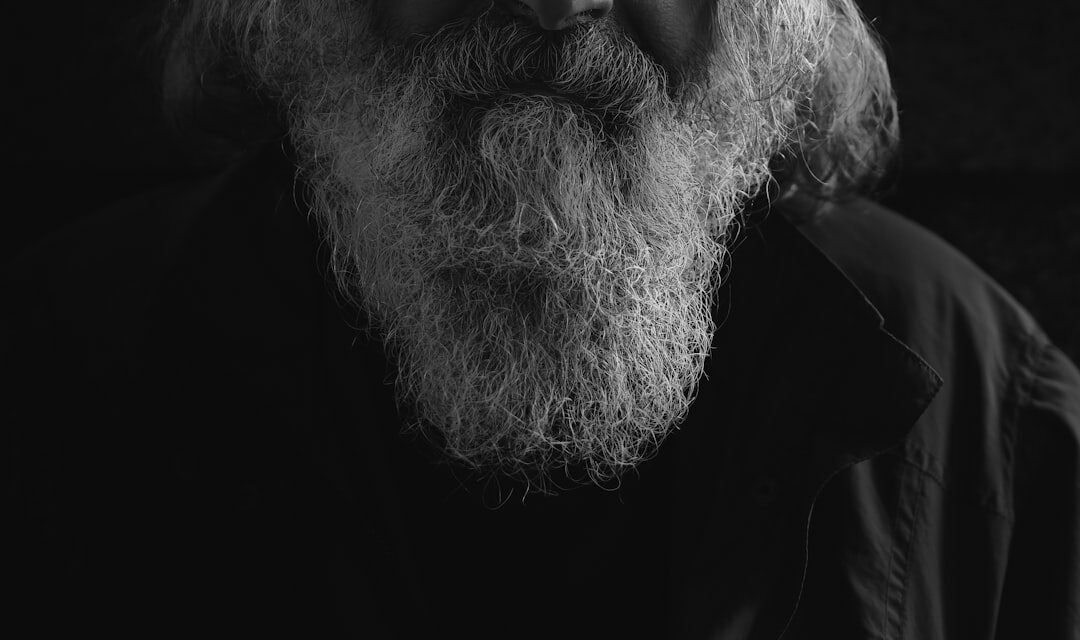Peter Paul Rubens was born on 28th June 1577 in Siegen, a small town in the Duchy of Nassau, which is now part of modern-day Germany. His family was of Flemish descent, and his father, Jan Rubens, was a lawyer who had fled to Germany due to political persecution. Tragically, Rubens’ father died when he was just ten years old, prompting his mother to return to Antwerp, where Rubens would spend much of his formative years.
Growing up in a culturally rich environment, he was exposed to the vibrant artistic scene of the city, which would later play a significant role in shaping his artistic vision. Rubens’ education began in earnest when he enrolled at the University of Antwerp, where he studied humanities and classical literature. However, his true passion lay in the arts.
At the age of 14, he became an apprentice to the prominent painter Otto van Veen, who was instrumental in honing Rubens’ skills. Under van Veen’s tutelage, Rubens developed a strong foundation in the techniques of painting and an appreciation for classical themes. This early exposure to both academic and artistic disciplines would serve as a springboard for his later achievements as one of the most celebrated artists of the Baroque period.
Summary
- Rubens was born in Siegen, Germany, and received a humanist education in Antwerp, Belgium.
- His artistic style was influenced by Italian Renaissance masters and the Baroque movement, resulting in dynamic compositions and rich, vibrant colours.
- Rubens rose to prominence as a prolific and sought-after painter, receiving commissions from royalty, nobility, and the church.
- He enjoyed patronage from prominent figures such as the Duke of Mantua and King Philip IV of Spain, leading to numerous prestigious commissions.
- Rubens’ workshop employed numerous assistants and collaborators, allowing him to produce a large volume of work and maintain a successful studio.
Artistic Influences and Style
Rubens’ artistic style is often characterised by its dynamism, vivid colour palette, and dramatic compositions. His influences were diverse, drawing from the works of Italian masters such as Titian and Michelangelo, as well as the Northern Renaissance artists like Albrecht Dürer. The Italian influence is particularly evident in his use of chiaroscuro—the contrast between light and shadow—which adds depth and volume to his figures.
Rubens was also inspired by the classical ideals of beauty and proportion, which he seamlessly integrated into his own unique style. In addition to these influences, Rubens was deeply affected by the Counter-Reformation’s emphasis on religious themes in art. This movement sought to inspire faith through emotional engagement and visual splendour, which resonated with Rubens’ own artistic sensibilities.
His ability to convey human emotion through expressive figures and dramatic narratives became a hallmark of his work. The synthesis of these various influences resulted in a style that was both grandiose and intimate, allowing him to explore a wide range of subjects from religious iconography to mythological scenes.
Rise to Prominence
Rubens’ rise to prominence began in earnest during the early 17th century when he returned to Antwerp after several years in Italy.
His first major commission came from the city of Antwerp itself, where he was tasked with creating a series of paintings for the Cathedral of Our Lady.
These works showcased his mastery of colour and composition, earning him widespread acclaim. As his reputation grew, Rubens began to attract the attention of nobility and royalty across Europe. His ability to create large-scale works that combined grandeur with emotional depth made him a sought-after artist for both public and private commissions.
By the 1620s, he had become one of the most celebrated painters in Europe, with patrons including King Philip IV of Spain and Charles I of England. His success was not merely due to his artistic talent; Rubens was also a shrewd businessman who understood the importance of networking and cultivating relationships with influential figures.
Patronage and Commissions
The patronage that Rubens received played a crucial role in his artistic development and success. His ability to secure commissions from powerful patrons allowed him to explore ambitious projects that showcased his talents on a grand scale. One notable example is the series of paintings he created for the Medici family in Florence, which included works such as “The Adoration of the Magi.” These commissions not only provided financial support but also elevated his status within elite circles.
Rubens’ work for various churches and civic institutions further solidified his reputation as a master painter. His altarpieces often featured dramatic scenes that conveyed deep religious significance while also appealing to the aesthetic sensibilities of the time. The combination of emotional resonance and technical prowess made his works highly sought after.
As a result, Rubens became adept at managing multiple projects simultaneously, often employing assistants to help realise his ambitious visions while maintaining his distinctive style.
The Rubens Workshop
The Rubens workshop became a bustling hub of artistic activity during the height of Rubens’ career. As demand for his work grew, so too did the need for a team of skilled assistants who could help execute his designs. This workshop model allowed Rubens to produce a large volume of work while maintaining high standards of quality.
He trained numerous artists who would go on to have successful careers in their own right, thus contributing to the dissemination of his style throughout Europe. In this collaborative environment, Rubens would often create detailed sketches or oil studies for larger compositions, which his assistants would then help bring to fruition. This method not only ensured that his vision was realised but also allowed for a certain level of experimentation within the workshop.
The dynamic interplay between Rubens and his assistants fostered an atmosphere of creativity that resulted in some of his most iconic works. The legacy of this workshop model can be seen in the way it influenced subsequent generations of artists who sought to balance individual expression with collaborative practice.
Religious and Mythological Themes in Rubens’ Art
Rubens’ oeuvre is rich with religious and mythological themes that reflect both personal beliefs and broader cultural currents of his time. His religious works often convey a sense of divine presence and human emotion, inviting viewers into a deeper engagement with spiritual narratives.
Mythological themes also feature prominently in Rubens’ work, allowing him to explore human experiences through allegory and symbolism. His depictions of classical myths often blend sensuality with moral lessons, as seen in works like “The Judgement of Paris.” These paintings not only celebrate beauty but also engage with complex themes such as desire, power, and fate. By intertwining religious and mythological narratives, Rubens created a body of work that resonated with contemporary audiences while also reflecting timeless human concerns.
Diplomatic Missions and Royal Connections
Rubens’ talents extended beyond painting; he was also an astute diplomat who navigated the complex political landscape of 17th-century Europe. His connections with royalty and nobility were not merely based on artistic merit but also on his ability to engage in diplomatic missions on behalf of various courts. Notably, he served as an envoy for King Philip IV of Spain, travelling to England to negotiate political alliances and cultural exchanges.
These diplomatic missions allowed Rubens to forge relationships with influential figures across Europe, further enhancing his status as both an artist and a diplomat. His ability to move seamlessly between artistic creation and political negotiation exemplified the multifaceted nature of his talents. Through these connections, he was able to secure prestigious commissions while also gaining insights into the cultural currents shaping Europe at the time.
Personal Life and Legacy
Rubens’ personal life was marked by both triumphs and tragedies that shaped his character and artistic vision. He married Isabella Brant in 1609, and their union produced three children before her untimely death in 1626. This loss profoundly affected Rubens, influencing both his personal life and artistic output during this period.
He later remarried Helena Fourment, who became both his muse and subject in many works. Rubens’ legacy extends far beyond his lifetime; he is often regarded as one of the most significant figures in Baroque art. His ability to blend emotional depth with technical brilliance set a standard for future generations of artists.
The influence of his work can be seen in various movements that followed, including Rococo and Romanticism. Moreover, his approach to colour, composition, and narrative continues to inspire artists today.
Techniques and Materials
Rubens was known for his innovative techniques and mastery over materials that contributed to the vibrancy and longevity of his paintings. He employed oil paint extensively, allowing for rich textures and luminous colours that became hallmarks of his style. His understanding of colour theory enabled him to create dynamic contrasts that brought life to his compositions.
In addition to traditional methods, Rubens experimented with underpainting techniques that involved laying down a monochromatic base before applying layers of colour on top. This approach not only enhanced depth but also allowed for greater control over tonal variations within his works. Furthermore, he often used large brushes to apply paint quickly and expressively, resulting in a sense of movement that characterises much of his oeuvre.
Impact and Influence on Art History
Rubens’ impact on art history is immeasurable; he is often credited with elevating Baroque painting to new heights through his innovative techniques and emotive storytelling. His ability to synthesise various influences into a cohesive style set a precedent for future artists who sought to balance technical skill with emotional resonance. The grandeur and dynamism present in Rubens’ work inspired countless painters across Europe, including artists such as Antoine Watteau and Jean-Auguste-Dominique Ingres.
Moreover, Rubens’ workshop model influenced subsequent generations by demonstrating how collaboration could enhance artistic production without compromising individual vision. His legacy can be seen not only in painting but also in other art forms such as sculpture and decorative arts that embraced similar themes of movement and emotion.
Notable Works and Collections
Among Rubens’ most notable works are masterpieces such as “The Descent from the Cross,” “The Garden of Love,” and “The Massacre of the Innocents.” Each piece showcases his ability to convey complex narratives through expressive figures and dramatic compositions. Many of these works are housed in prestigious collections around the world, including the Prado Museum in Madrid, the Louvre in Paris, and the National Gallery in London. Rubens’ paintings continue to captivate audiences today, serving as enduring testaments to his genius as an artist.
The emotional depth, technical mastery, and rich thematic content found within his works ensure that they remain relevant within contemporary discussions about art history and its evolution over time. As we reflect on Rubens’ contributions to the world of art, it becomes clear that his legacy is one that transcends time—an enduring celebration of human experience captured through paint on canvas.
If you are interested in learning more about the techniques and materials used by artists, you may also enjoy reading this article on protecting charcoal work with fixatives and storage. Just like Peter Paul Rubens, artists throughout history have had to carefully consider how to preserve their work for future generations.


